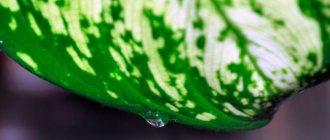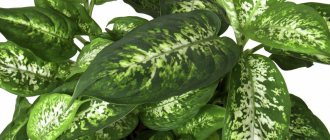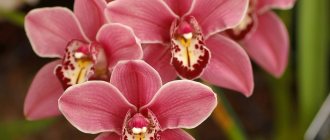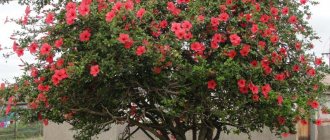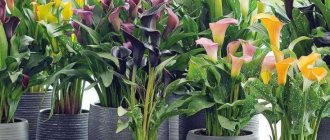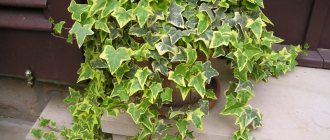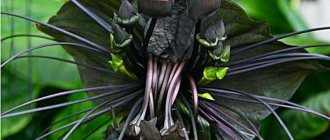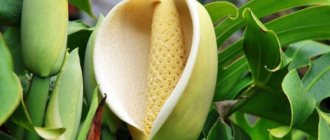A guest from South America, Monstera is a very beautiful decorative vine with large carved leaves. It can often be seen in offices; some people like to grow such a plant in residential premises. There are quite contradictory opinions about the monster. Some consider this plant not only beautiful, but also useful. Others, who believe in omens and superstitions, claim that this plant should not be kept in the house. Some believe that when a monstera is in the house, omens come true, while others grow it and do not observe any negative effects.
Dispelling popular myths
Monstera, an inhabitant of humid subtropics, reaches gigantic sizes in natural conditions. This large vine grows up to 40 meters or more in length, twining around tall trees. Additional long roots grow on its trunks, which can hang all the way to the ground, entwining and growing through everything that gets in their way.
In past centuries, travelers in South America often found monstera thickets in the jungle, next to which lay the skeletons of people and animals, riddled with the roots of these plants. The sight was terrible. In fact, these were the remains of those who accidentally died not far from these thickets, and the roots then grew through everything that came across their path.
But among many peoples there were legends about a dangerous plant that lured travelers and then pierced them with its roots. Since then, monstera (translated as “monster”, “monster”) has retained an ominous mystical reputation. This is the reason why you can’t keep a monstera at home. In fact, this is a very beautiful and rather harmless plant, if you follow some precautions for its maintenance.
Folk signs, magical properties, superstitions
Male happiness is a flower that cannot be kept at home
Many lovers of growing flowers associate the plant with the word “monster” and are afraid to place it in their home. There is a superstition that when the philodendron senses negativity, it absorbs it and releases positive energy. And, conversely, in a prosperous environment it will highlight the negative.
Note! In fact, Monstera only absorbs negative energy, just like most indoor flowers.
What other signs are there associated with the flower:
- the plant repels men. The sign is that it prevents a girl who wants to get married from finding a husband, and in an already established family, the effect causes discord in relationships and provokes a rapid cooling of the spouses’ feelings towards each other;
- sucks energy out of people and animals. Monstera can really absorb negative vibes, which is why it is placed near electrical appliances.
Why is the plant dangerous?
Many people grow this beautiful exotic plant in their apartments without any harm to themselves or others. But it has some features that must be taken into account when placing:
- During the day, the monstera releases oxygen, and at night it actively absorbs it. Therefore, it cannot be kept in the bedroom, especially in a small one. In general, this plant is quite large (it grows up to 3-5 meters indoors) and is suitable only for spacious rooms, especially with such properties. It belongs in offices, greenhouses, and large living rooms, where it looks very impressive.
- Whether Monstera is poisonous or not depends on the part of the plant. The juice of its leaves is poisonous (can cause poisoning and irritation of mucous membranes), so it is not recommended to grow it where there are small children or animals. Moreover, with poisonous leaves (if you chew them, you can get poisoned), it has very tasty edible fruits.
- Some esotericists consider the monstera to be an energy vampire, so they do not recommend placing it in the bedroom so as not to feel weak and overwhelmed.
Where can you keep a flower?
There are other places in the house to place monstera. This vine-like flower reaches several meters in length, so you need to give it a lot of space.
Often a flower is placed at the front door. Many believe that this is how he maintains happiness.
You can also place it in the living room or kitchen. The most important thing is to protect children and animals from consuming flower leaves in order to avoid irritation and allergic reactions.
If the child in the house is very small, the plant should be fenced. You can be sure that it will not indirectly harm anything living in the house. That's what science says.
For reference: monstera propagation occurs by cuttings or cutting off leaves; if desired, you can easily increase the number of bushes.
Useful properties of the flower
This flower has much more beneficial properties:
- In practice, it has been proven that this plant absorbs negative energy and can relieve headaches. To do this, you just need to stay a little near her.
- In many southern countries, this plant is considered a strong talisman for the hearth and is often planted near the house. And if you place it next to a sick person, he will quickly recover.
- It is believed that it helps improve thought processes and concentration. Therefore, in institutions it can often be seen in conference rooms and other rooms. Many believe that it creates excellent conditions for business negotiations and has a positive effect on making the right choice.
- According to Feng Shui, Monstera is perceived as a symbol and helps to make important decisions.
- It has been noticed that Monstera is an excellent green filter in the room, effectively purifying the air from dust and harmful impurities. Also, it perfectly suppresses the development of viruses and pathogenic microorganisms. It is good to place it in dry rooms to normalize air humidity.
- Monstera actively absorbs harmful micro- and electric waves and other radiation. Therefore, by placing it next to the refrigerator, microwave, TV or other household appliances, you will significantly reduce their harmful effects on the body.
Feng Shui
Feng Shui masters recommend keeping this flower in your home or office to balance the energies of Yin and Yang.
They say that next to such a plant it is easier to come to an agreement, reach a compromise and a mutually beneficial solution.
It should not be placed in the nursery and bedroom, but it can be placed in all other rooms.
- In the hallway, the liana will become a real protector - it will eliminate the negativity that penetrates through the front door, ward off thieves, ill-wishers and simply unpleasant people. If you have accumulated worries and negative emotions during the day, she will not let you take it all home.
- If you keep a flower in the living room, mutual understanding and well-being of family members will improve. It will help you recover after a hard day, stress or illness.
- in the kitchen - balances the fire element, neutralizes vibrations from appliances, soot and bad odors. Normalizes digestion and metabolism, encourages moderation in food and a healthy lifestyle.
- In the office - promotes clear thinking, perseverance, concentration, creativity. A person works more efficiently and gets tired less. In addition, the energy of the liana activates cash flows and opens up new opportunities for earning money.
- In the office - eliminates quarrels and misunderstandings in the team, humidifies and ozonates the air, neutralizes magnetic radiation from computers and office equipment, and prevents overvoltage.
Remember: only a healthy plant has beneficial properties, which is why regular care for it is so important.
Is it worth starting a house?
So, it has much more beneficial properties than harmful ones. Therefore, everyone decides for themselves whether it is possible to keep a monstera flower at home. This plant not only serves as an excellent interior decoration, but can also fill the home with a favorable atmosphere. It is best to keep it in a spacious hallway or living room; some people find a place for it in the kitchen. But it is not recommended to place it in the bedroom or children's room.
If you are distrustful of monstera , then it is better not to have it in your home, because this flower is very sensitive to negativity and will not grow well in such conditions. With careful handling, the monstera can even bloom, although this rarely happens at home. When deciding to have one at home, you should first study its features and how to properly care for it.
Is it possible for an unmarried woman to keep a monstera at home?
Superstitions and myths floating around monstera say that this plant can destroy a person’s aura and energy protection. As a result, personal life and health are disrupted. Therefore, unmarried girls are not recommended to have a monstera.
It is noteworthy that the monstera is called muzhegon along with ivy, but there is no evidence for this theory, everything is limited to superstition.
In addition, it is worth remembering that in its homeland the philodendron is considered a symbol of the family hearth. The bad reputation around him only extends far from his habitats.
Description of monstera
The monstera liana has another name “philodendron”, which means “amazing”, “bizarre”. Despite its gigantic size in natural conditions, the vine indoors usually grows up to 3 meters, less often up to 5 meters.
It has large, beautiful, carved leaves with numerous holes in the middle. They appeared so that in natural conditions, where there are often heavy tropical downpours, the leaves are not damaged by powerful flows of water. Young shoots have small , heart-shaped leaves without holes.
In the jungle, vines curl around tree trunks. At home, you need to install a support about 1 meter high in a pot, wrapped in sphagnum moss, which must be constantly moistened.
On its stems, upper roots grow in different places, which cannot be removed so that the plant can develop normally. They are quite delicate and must be handled with care and sprayed periodically. When they grow, it is better to dig them in with soil in a pot. But if they are already too large, then separate containers are added for them - pots with soil or jars with water.
Monstera is poisonous. Monstera: varieties and their characteristics, features of planting and care
Monstera delights with its appearance, excites the imagination with the myths that are associated with it, captivates with its ease of care and surprises with the fact that it has edible fruits. No wonder this spreading ornamental plant decorates many houses of our compatriots.
Origin
Monstera is a plant of the Araceae family, famous primarily for its large leaves. The name of the plant translates as “bizarre” (another version of “monster”), and the tropical forests of Central America are called its homeland. In nature, the liana is also found in Asia, South America, in the tropics of Mexico, Costa Rica, and Panama. In Australia it is grown for its edible cobs.
In temperate climates, Monstera is usually cultivated as an indoor ornamental plant.
There are many conflicting claims associated with it, one of which concerns its toxicity. This issue will be covered in more detail in a separate chapter of this article. Now let’s look at other features of growing vines at home. It has large leaves, and therefore actively releases oxygen and evaporates moisture. All this allows you to maintain an optimal indoor microclimate. The huge leaves of the vine absorb electromagnetic radiation and formaldehyde fumes.
Monstera can often be seen in offices, lecture halls, and libraries. And this is due not only to the fact that a large plant looks attractive in large rooms, but also to the fact that it has a positive effect on the nervous system - it calms, allows you to concentrate, and harmonizes thoughts. In addition, the vine has strengthening properties.
Description
Monstera grows in a unique way. First, the stem is overgrown with leaves; they form several per year. In most cases, the leaves of young vines do not have the usual holes. Gradually they increase, and then their appearance stops. The plant “acquires” aerial roots. This stage is again replaced by a period of the appearance of new plates and an increase in their size. Then the growth of leaves stops again, the plant directs its energy to growing aerial roots.
In older vines, along with leaves, side shoots also form.
Leaves
The vine is known for its huge sheets of leaves. As a rule, the leaf diameter reaches 70-90 cm. In tropical conditions, this figure can exceed 1 m. When grown at home, the vine usually has slightly smaller plates - on average 50-70 cm. The leaves are attached to the trunk by long petioles that wrap around the stem. The plates are covered with shiny leather skin and have a green color (from light to deep dark). As already mentioned, the leaves of a young vine are slightly smaller and do not yet have perforations. They are characterized by a lighter color. As the plant grows, the leaves darken, increase in size, and slits or perforations appear across their entire surface.
Leaves with “holes” appear first as a curled tube, which then opens up, turning into a plate with characteristic openwork “holes”. After this, the leaf increases slightly in size, becomes denser and acquires a beautiful shine. The older the monstera leaf, the more obvious its segmentation becomes. Over time, the leaves become pinnately dissected. The plant acquires an easily recognizable original “appearance”.
Tips for proper care
A guest from the tropics loves a humid , warm microclimate, good lighting without direct rays. Capricious - does not like touches and drafts. When the air humidity is high or rainy weather is approaching, droplets of water appear on the leaves - a living barometer in the house.
- Watering. Despite the fact that it loves moisture, too much watering is harmful and can lead to rotting of the roots and falling leaves. It is better to periodically spray the leaves and upper roots with moderate watering. By the way, the leaves should be wiped with a soft sponge to remove dust, but only mature ones - young ones should not be used, as they can be damaged.
- Soil and replanting. Neutral and universal soils are suitable for monstera. Young plants are transplanted into larger pots every spring, and when they grow too large, some of the soil in the pot is only renewed without replanting.
- Reproduction. Young plants are easily grown in many ways: from seeds, stem cuttings, leaves, apical cuttings, aerial roots.
- Pests and diseases. Susceptible to spider mites and scale insects. With improper care (overdrying or waterlogging), the leaves may turn yellow and black.
Monstera at home
Impact on humans
How does the monstera flower affect a person? It is imperative to highlight the enrichment of air with useful substances and improvement of the microclimate. Now this is very important, since the air in cities is highly polluted. In addition, the plant absorbs harmful impurities and collects dust that could accumulate in the air.
Monstera also prevents the development of fungi and various viruses due to its properties. In addition, the flower releases substances that protect people from various diseases.
At the same time, folk signs and superstitions endow the monstera with negative properties. Whether or not to pay attention to such things is up to everyone to decide for themselves.
If a lover of indoor plants likes the appearance of a flower, and superstitions do not scare you, it may be worth buying it for your home. It will greatly benefit the whole family. But the plant has not been proven to have a negative effect, so you should not worry about this.
Monstera flower - signs and superstitions, myths and reality
There is a widespread belief that Monstera should not be kept in residential premises. The only suitable place for it is office space. This point of view is based on numerous mythical properties that are attributed to this representative of the exotic flora.
The unusual appearance - huge dissected leaves of a strange shape and hanging roots, caused people to feel anxiety and fear. The vine, mistaken for a predator, was given the Latin name Monstéra, and this is the main reason for most fears and superstitions.
The plant is not capable of having a negative effect and does not emit any volatile compounds harmful to health - this is a superstition. There are some of the most persistent misconceptions that have existed for several decades.
How to care for monstera? What else is worth knowing about her?
Are characteristic drops appearing on the leaves of your plant? Are you wondering why the monstera “cries”? This is due to the natural phenomenon of gutation, i.e. the plant releases excess water. This usually occurs at high levels of air humidity.
It's time to learn a few tricks that will allow you to enjoy the beautiful appearance of the plant. When thinking about how to care for monstera, be sure to spray it. This activity is even more important to her than watering.
The need for spraying is determined by the place of origin of the monstera. The plant grows in humid equatorial forests, so its leaves should be sprayed regularly. Spray the plant twice a week during the heating season and summer, and once a week in other months. For spraying, use boiled water. Rainwater is also wonderful - using it to care for plants is an environmental solution.
What happens if you place a monstera in the bedroom?
The functions of a vine, like a flower, do not depend in any way on the room in which it is located. If the bedroom is also a workplace where there are many gadgets and a TV, then the monstera will happily take on some of the electromagnetic radiation and ionize the air for a comfortable life.
In addition, if a sick person spends most of his time in bed in the bedroom, the plant will again come to the rescue. It will increase air humidity and at the same time fight pathogenic microbes, provided that doctors place the flower pot in the right place.
Note! If children or pets often look into the bedroom, it is better to put the flower on the top shelves. This way you can protect them from accidentally getting parts of the plant inside the body.
